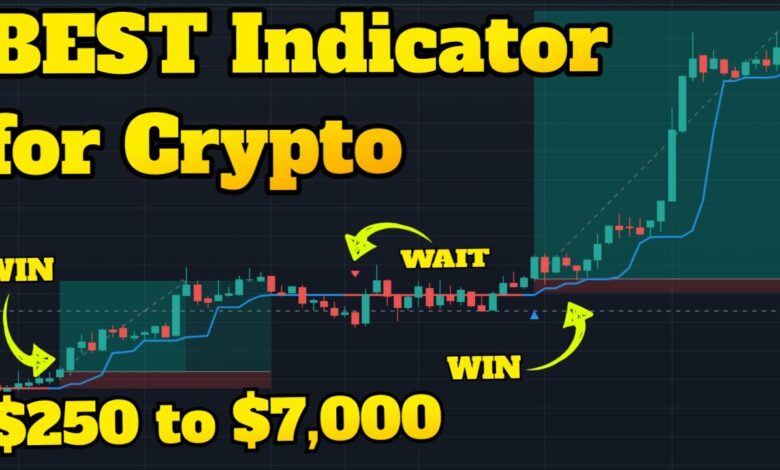Best Indicators for Crypto Trading

Welcome to the world of cryptocurrency trading! It’s a fast-paced digital environment where traditional financial systems meet advanced technology. To succeed here, it’s crucial to be skilled at navigating the market. Today, we want to discuss common indicators for crypto trading. They are designed to help you make well-informed decisions during the unpredictable changes in digital currencies. Ranging from intricate algorithms to user-friendly visual representations, indicators provide data about market trends, prices, and potential opportunities. Whether you’re a seasoned trader or a beginner, understanding indicators is crucial for unlocking the potential of the crypto market. So, read on if you’re curious about crypto trading indicators.
Before we start, we’d like to recommend you visit the best site to buy crypto – WhiteBIT. That’s a reliable and user-friendly platform where you can polish your trading skills and receive assistance when trying its tools.
Revealing the Best Crypto Indicators
In an unstable and ever-changing market, relying on indicators is crucial for achieving success. For example, tech indicators provide valuable data about market trends, rate changes, and potential earning prospects. Let’s discuss some of the main indicators:
- Moving averages (MA) are popular indicators used to identify trends and potential reversal points. They effectively smooth out price fluctuations over a specific time frame, granting traders a comprehensive understanding of a market’s overall direction.
- The Relative Strength Index (RSI) gauges the speed and magnitude of price movements. It aids traders in recognizing overbought and oversold conditions, signifying potential reversals. The RSI ranges from 0 to 100, with values above 70 indicating overbought conditions, and values below 30 – oversold conditions.
- Bollinger Bands encompass a simple moving average and two bands that represent standard deviations. These bands dynamically expand and become narrower based on market volatility. When prices gravitate toward the upper band, it suggests overbought conditions, while moving toward the lower band implies oversold conditions. Traders actively seek price breakouts or rebounds at the edges of these bands to determine opportune entry or exit points.
The Moving Average Convergence\Divergence (MACD) and Fibonacci Retracement are other important indicators we’ll discuss in another article. Integrating a combination of best Bitcoin indicators significantly enhances trading decisions. Moving averages, RSI, Bollinger Bands, and MACD represent a fraction of the indicators traders apply in their strategies. It is imperative to grasp the functionality of each indicator and employ them alongside other analytical methods and risk management strategies.
Now a little more about each of them:
Moving Average Convergence/Divergence (MACD):
- The MACD is a versatile indicator that provides insights into both trend strength and potential trend reversals. By comparing two moving averages, the MACD generates a histogram that showcases the convergence and divergence between the two lines. This information helps traders identify trends and spot potential buying or selling opportunities. Additionally, the MACD also has a signal line, which further aids in recognizing trend changes. Integrating the MACD into your analysis can lead to more precise trade executions.
Fibonacci Retracement:
- The Fibonacci Retracement is a unique and powerful tool used by many traders in the crypto market. It is based on the Fibonacci sequence, a series of numbers in which each number is the sum of the two preceding ones. By applying these ratios to price movements, traders can identify potential support and resistance levels, allowing them to make informed decisions about entry and exit points. The Fibonacci Retracement is a valuable complement to other indicators, enhancing your ability to anticipate market movements effectively.
Stochastic Oscillator:
- The Stochastic Oscillator is a momentum indicator that compares the closing price of an asset to its price range over a specific period. It generates values between 0 and 100, helping traders identify overbought and oversold conditions in the market. When the Stochastic Oscillator reaches extreme levels, it signals potential reversals in price direction. By incorporating the Stochastic Oscillator into your toolkit, you can increase your chances of making profitable trades.
Volume Indicator:
- Volume is a critical aspect of any market, and the crypto market is no exception. The Volume Indicator tracks the trading volume of a particular asset, helping traders gauge the strength of a trend or potential price reversal. High trading volumes during price movements confirm the validity of the trend, while low volumes may indicate a lack of interest or uncertainty. Paying attention to volume patterns can provide valuable insights into market sentiment and enhance your trading decisions.
Ichimoku Cloud:
- The Ichimoku Cloud is a comprehensive indicator that provides a holistic view of price movements. It consists of five lines, including the cloud (Kumo), which represents support and resistance levels. The Ichimoku Cloud also offers insights into trends, momentum, and potential trend reversals. By understanding this indicator’s intricacies, you can gain a more comprehensive understanding of the market’s current state and make well-timed trades.
In conclusion, mastering the best indicators for crypto trading is a journey that requires continuous learning and practice. Integrating these powerful tools into your analysis can significantly improve your trading strategies and increase your chances of success in the dynamic world of cryptocurrencies. Remember to combine these indicators with other technical and fundamental analysis methods while also adhering to sound risk management practices. As the crypto market evolves, staying informed and adaptive will be the keys to thriving as a cryptocurrency trader. Happy trading!